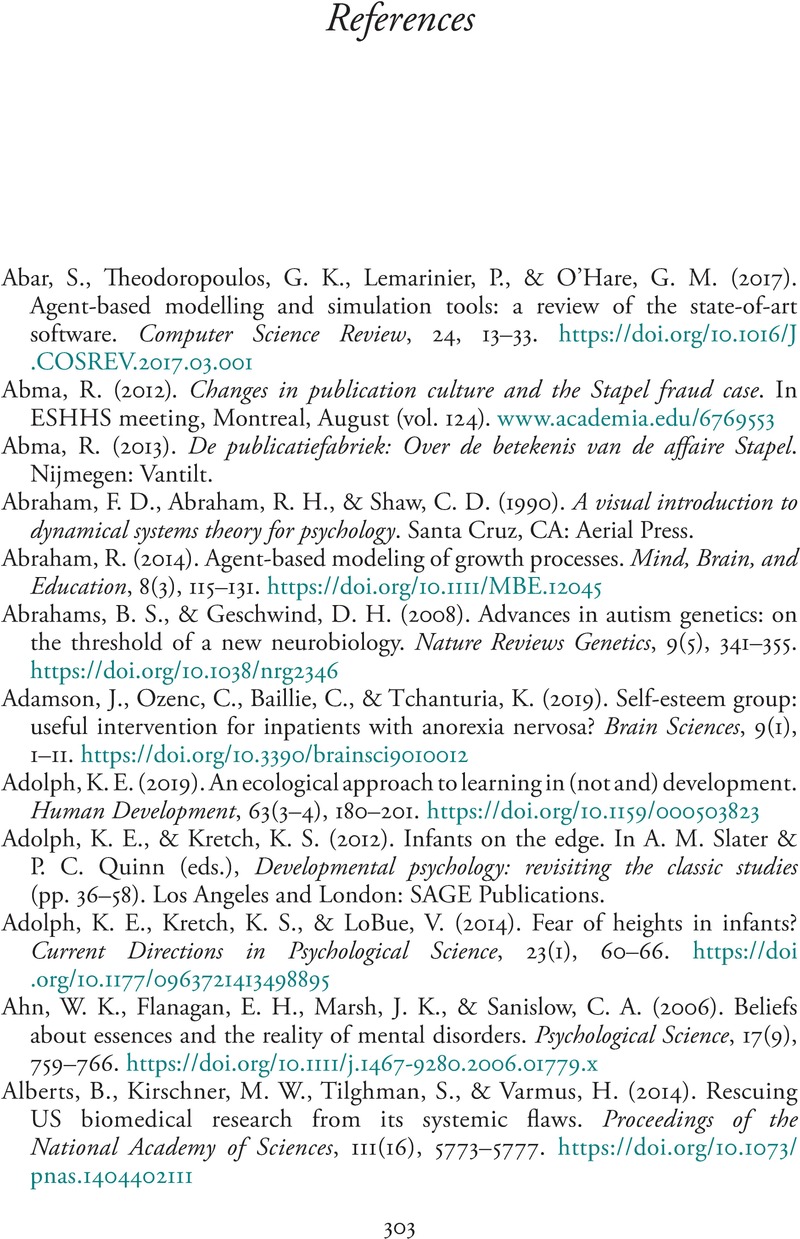Book contents
- Toward a Process Approach in Psychology
- Toward a Process Approach in Psychology
- Copyright page
- Contents
- Figures
- Acknowledgments
- Introduction
- Chapter 1 Change, the Final Frontier
- Chapter 2 A (Selected) Foundation for a Process Approach
- Chapter 3 The Goal of Socrates
- Chapter 4 Esteeming Entities
- Chapter 5 A Person Acting amongst Persons
- Chapter 6 Cliffhangers and Utilitarian Infants
- Chapter 7 Causes, Kings, and Interventions
- Chapter 8 (Compl)explanation and King Alfonso’s Lament
- Chapter 9 What’s in a Name?
- Chapter 10 (Un)Certainties
- Chapter 11 Troubled Waters of Heraclitus’ River?
- Chapter 12 Psychological Science as a Complex Dynamic System
- Glossary
- References
- Index
- References
References
Published online by Cambridge University Press: 14 July 2022
- Toward a Process Approach in Psychology
- Toward a Process Approach in Psychology
- Copyright page
- Contents
- Figures
- Acknowledgments
- Introduction
- Chapter 1 Change, the Final Frontier
- Chapter 2 A (Selected) Foundation for a Process Approach
- Chapter 3 The Goal of Socrates
- Chapter 4 Esteeming Entities
- Chapter 5 A Person Acting amongst Persons
- Chapter 6 Cliffhangers and Utilitarian Infants
- Chapter 7 Causes, Kings, and Interventions
- Chapter 8 (Compl)explanation and King Alfonso’s Lament
- Chapter 9 What’s in a Name?
- Chapter 10 (Un)Certainties
- Chapter 11 Troubled Waters of Heraclitus’ River?
- Chapter 12 Psychological Science as a Complex Dynamic System
- Glossary
- References
- Index
- References
Summary

- Type
- Chapter
- Information
- Toward a Process Approach in PsychologyStepping into Heraclitus' River, pp. 303 - 352Publisher: Cambridge University PressPrint publication year: 2022

